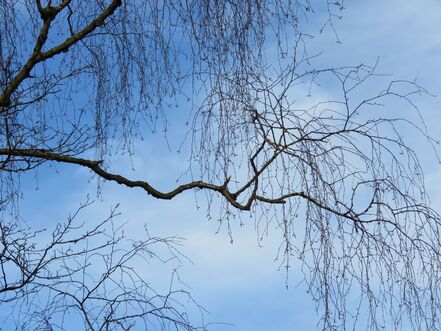 Birch, its twigs tipped with tiny catkins
Birch, its twigs tipped with tiny catkins Bewitching birch whose twigs can be made into besoms used by gardeners to sweep fallen leaves from grass. Birch twigs are seasoned for the broom and its handle is bound with hazel or willow.
Hazel are the most familiar catkins because they are early-flowering, well before the leaves appear. And the pendent male catkins come in a shower of golden pollen. Tiny female flowers are rarer and harder to see. In the Sizergh woods there is neglected hazel coppice. A well-managed coppice opens up clearings in a woodland, enabling sunlight to reach down to the herb layer and to bring forth spring flowers- before the trees are fully in leaf and light is reduced by foliage. Glades of flowers attract butterflies so coppicing is crucial to management of the woods for butterflies. In summer, Silver Washed Fritillary will be on the wing.
Hornbeam catkins are not yet showing. The trees surround the Sizergh cafe and once we came upon a little boy excited to find the grass beneath a hornbeam thick with 'caterpillars.' And why not? Caterpillars feast on fresh buds high in the trees. The hornbeam had shed not caterpillars but catkins.
We're hoping snowdrops will be in bloom but these trees are so lovely against a blue sky with a scatter of white cloud.
Walking beside the flailed hawthorn hedge, toward the castle, we regret coppicers have not been employed to lay the hedge well. And I reflect how time has transformed the fallen senescent hawthorn into something so unlike its younger self. 100-150 years for an old hawthorn, and the oldest recorded tree might be 400 years.
There's a whistling of widgeon from the pool not far from Holeslack Farm and they feed with teal and moorhen in aquatic vegetation. Woodpecker are drumming high in ivy-clad trees and the sound resonates but we cannot see them. The herb layer is lovely with snowdrops and the green shoots of bluebells spike up through the earth. Another bluebell wood to add to the map.
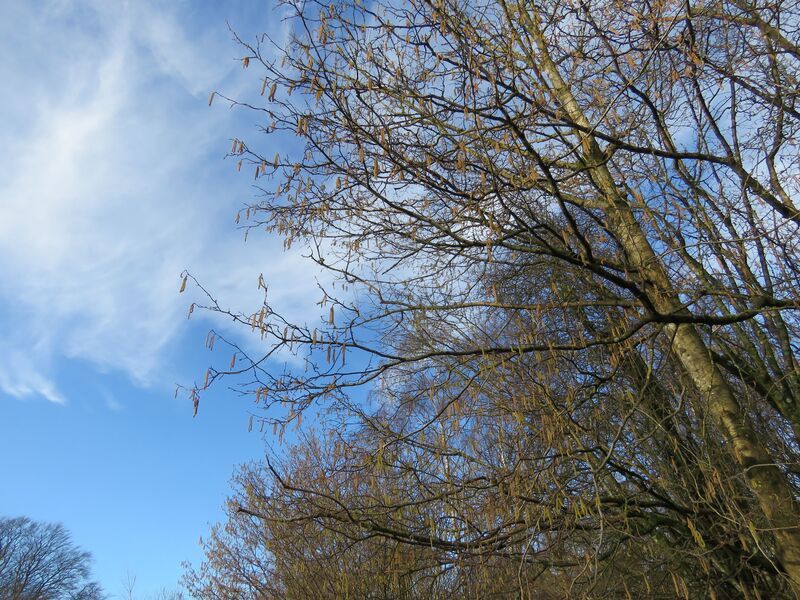
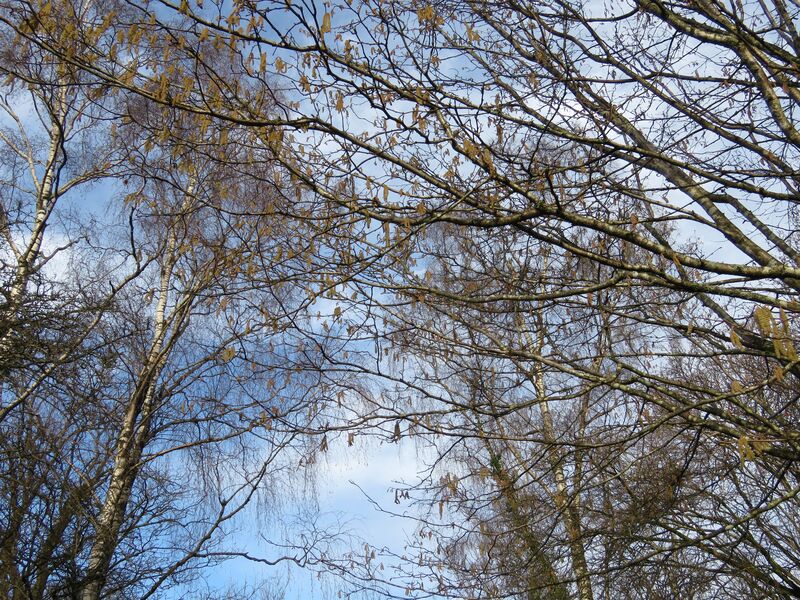
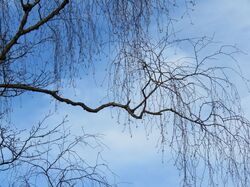
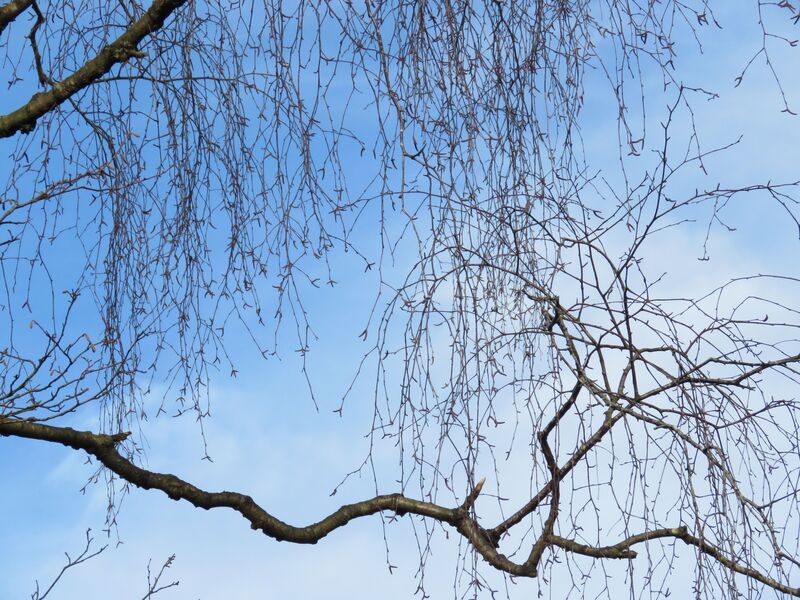
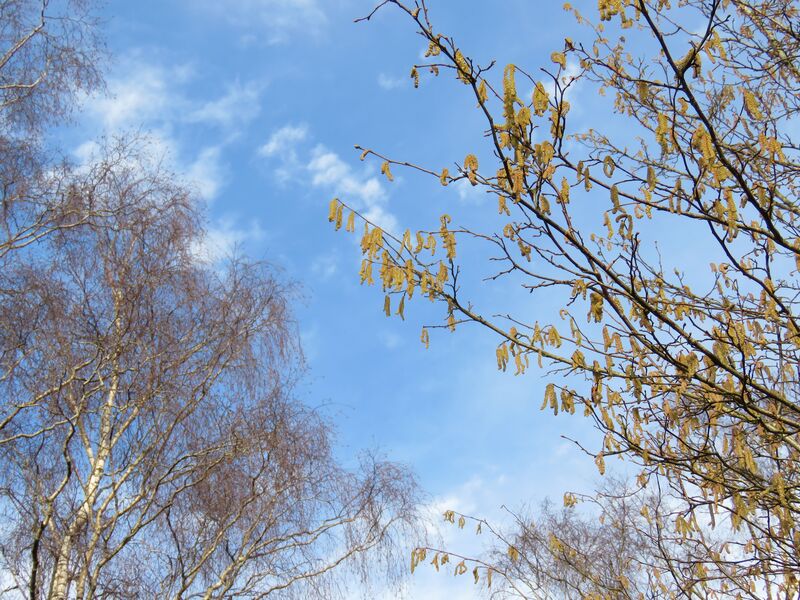
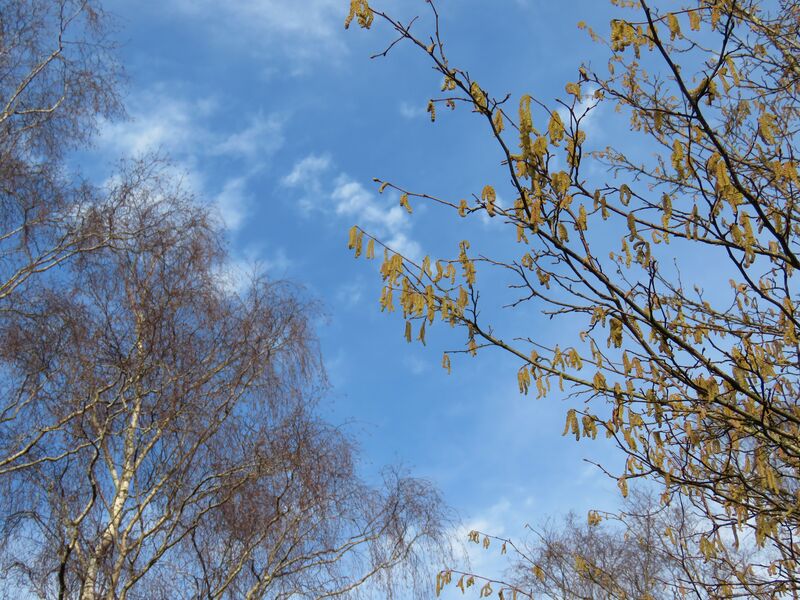
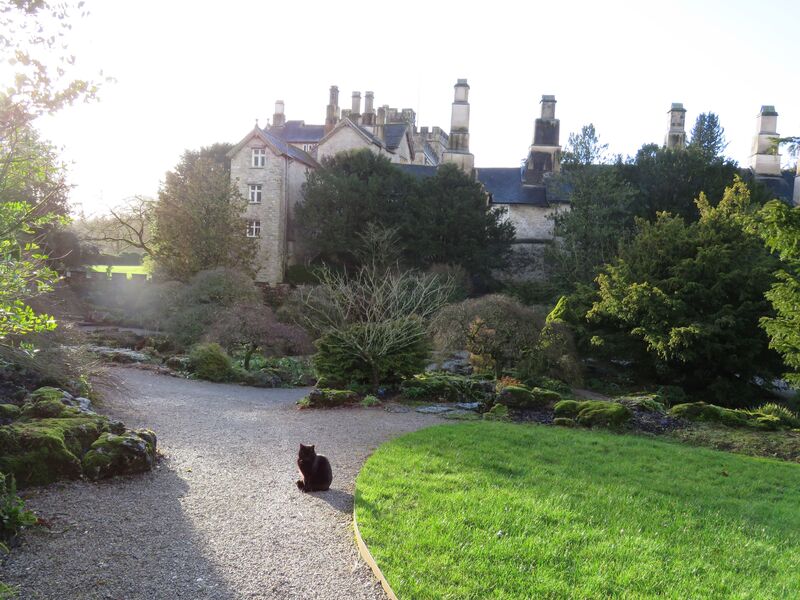
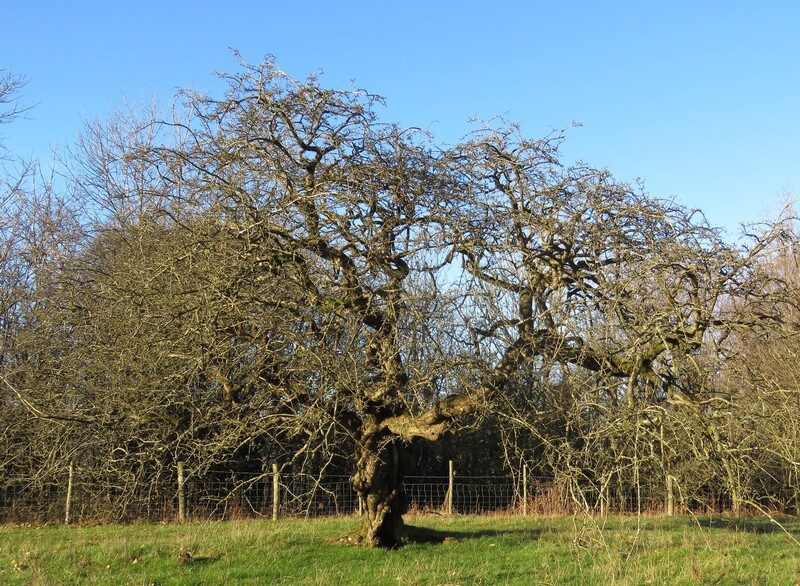
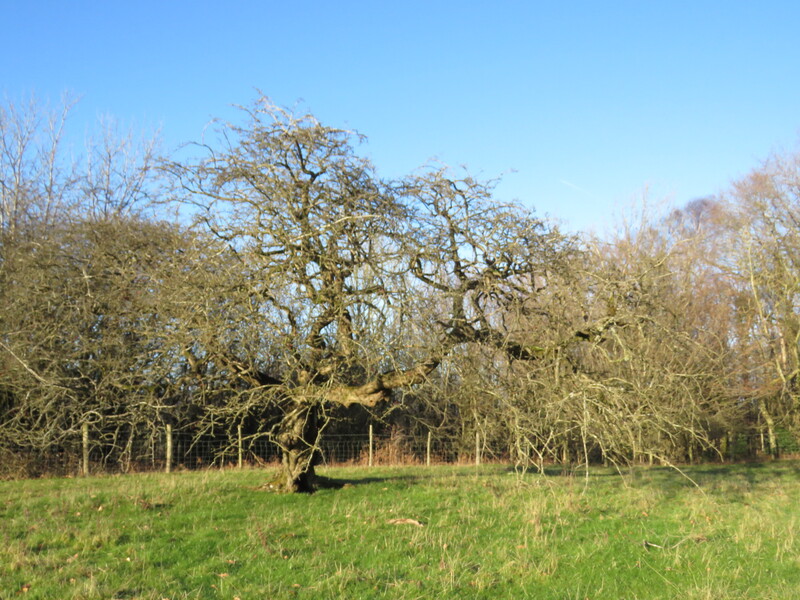
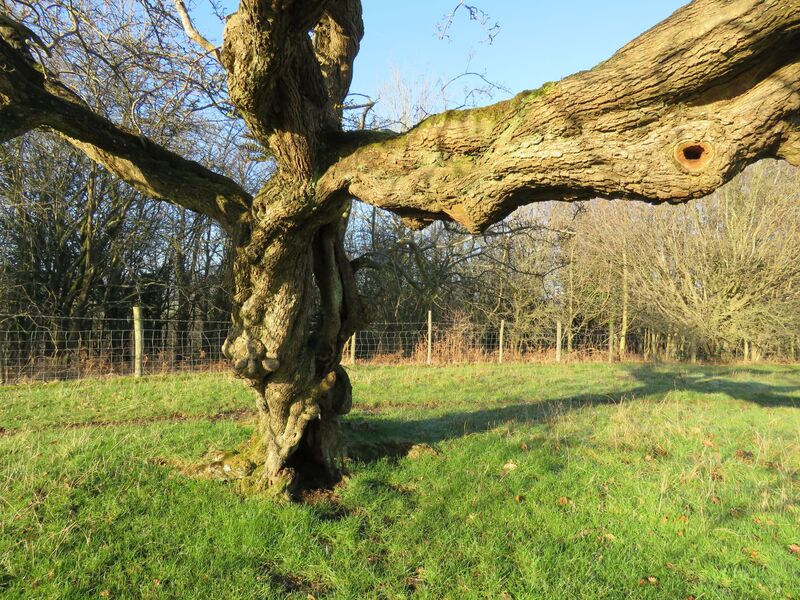
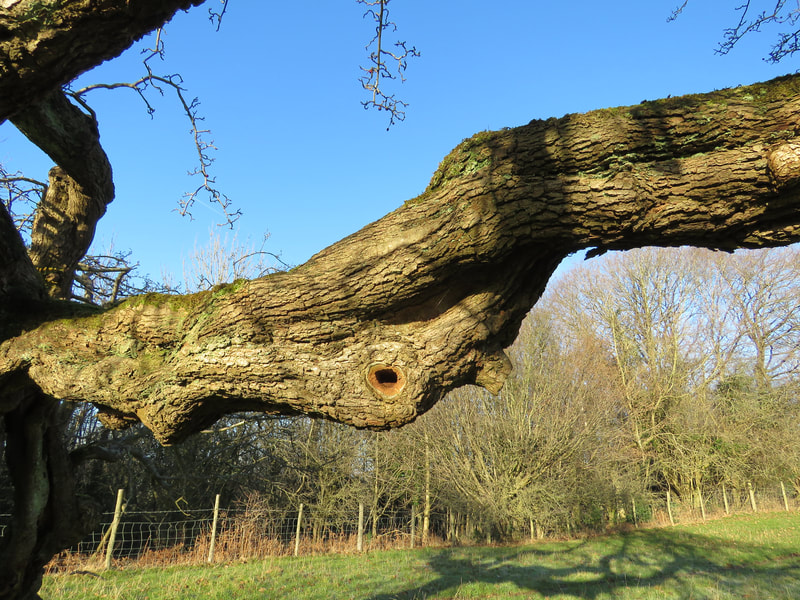

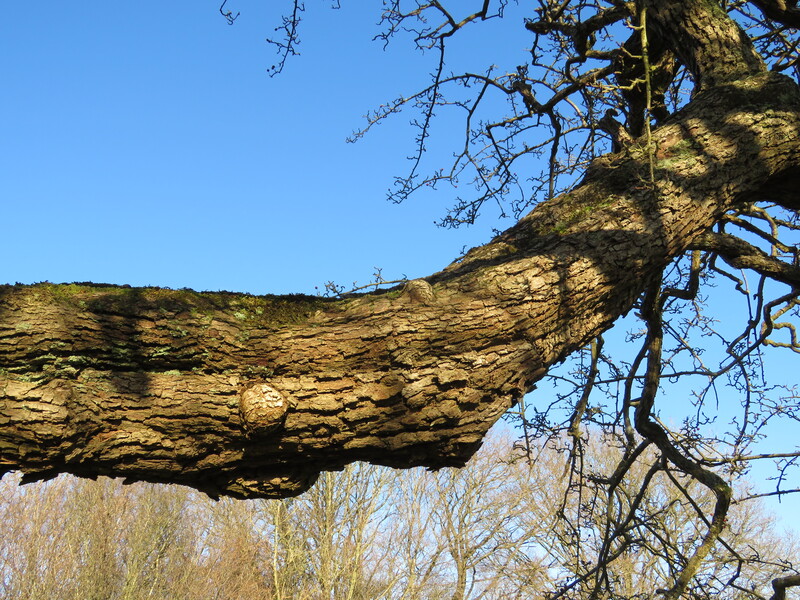
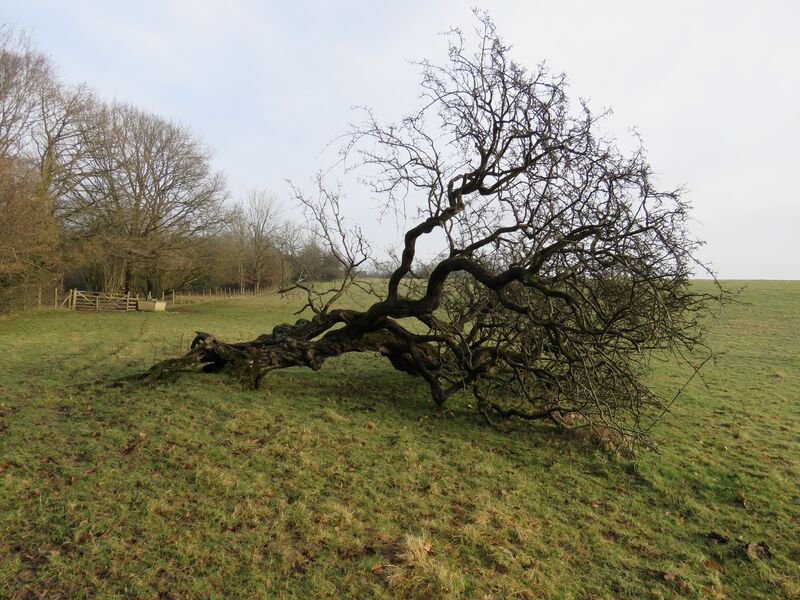
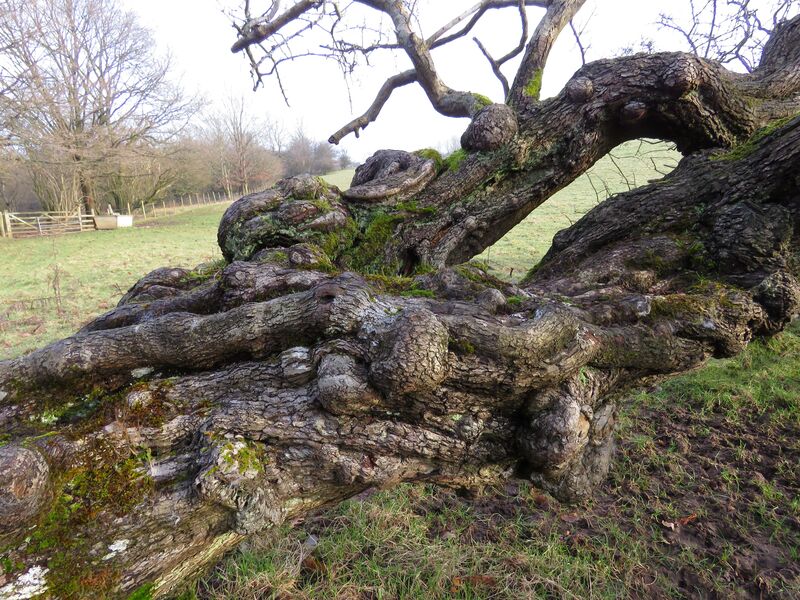
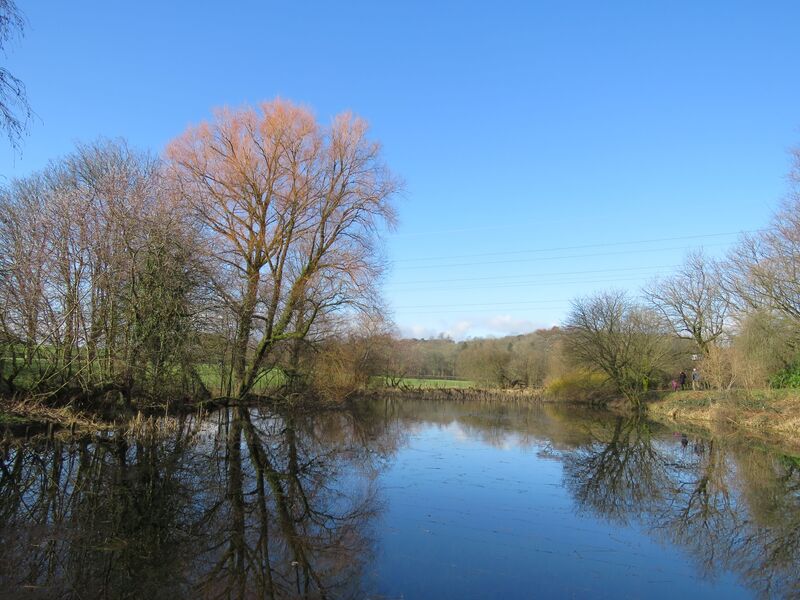
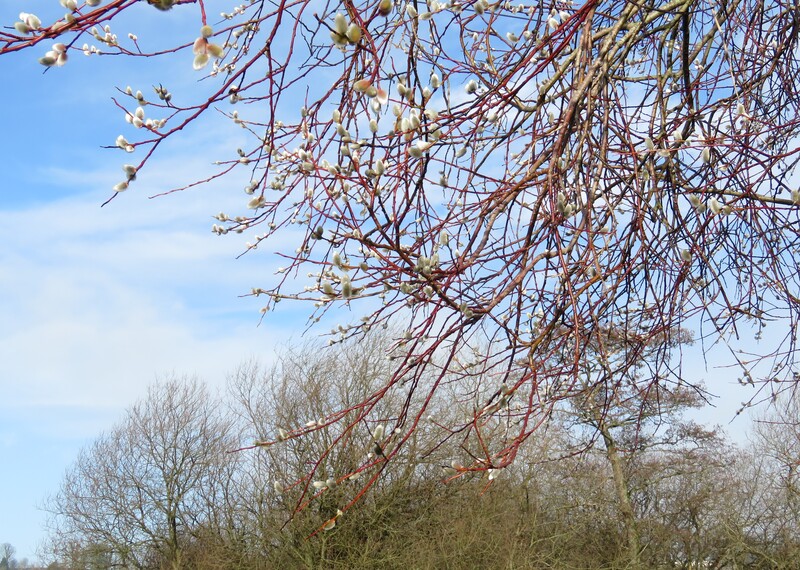
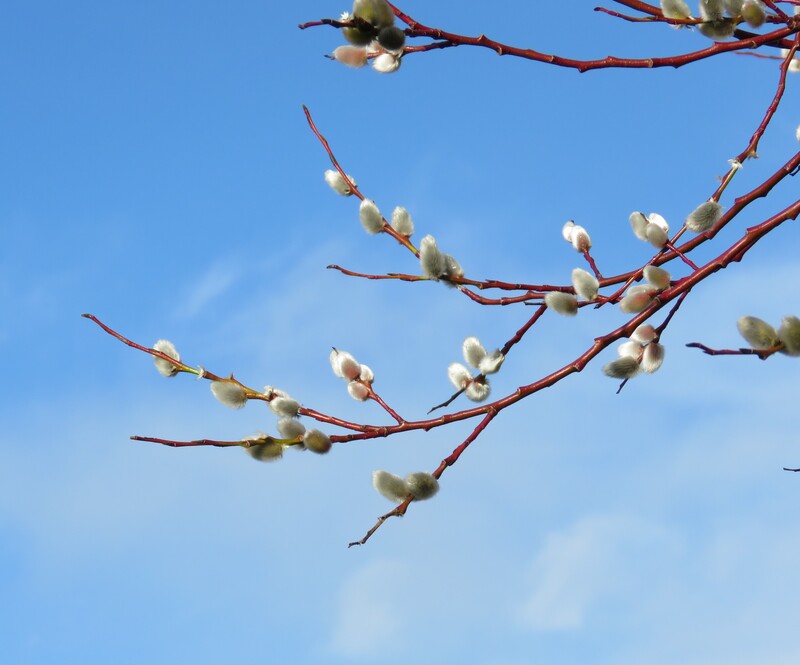

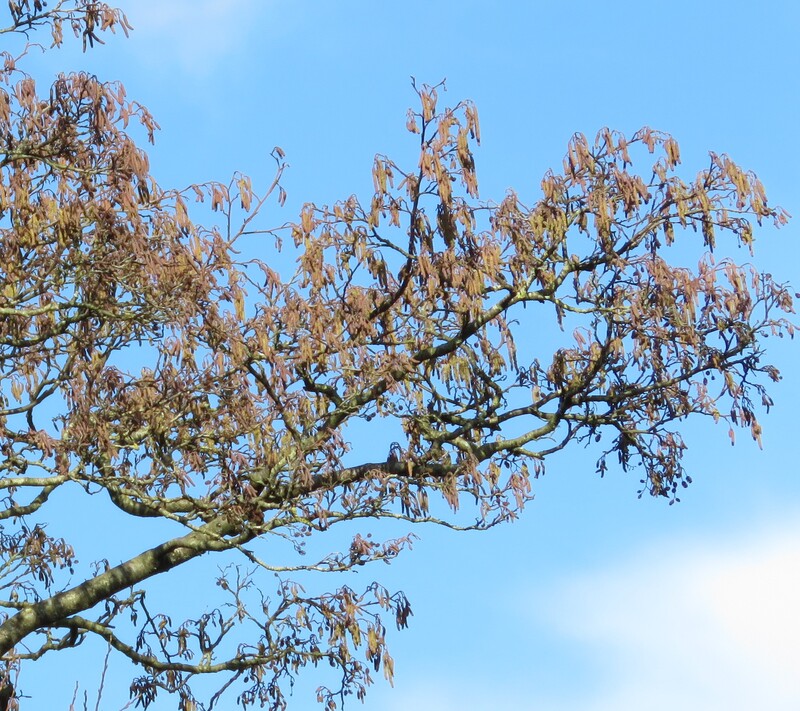
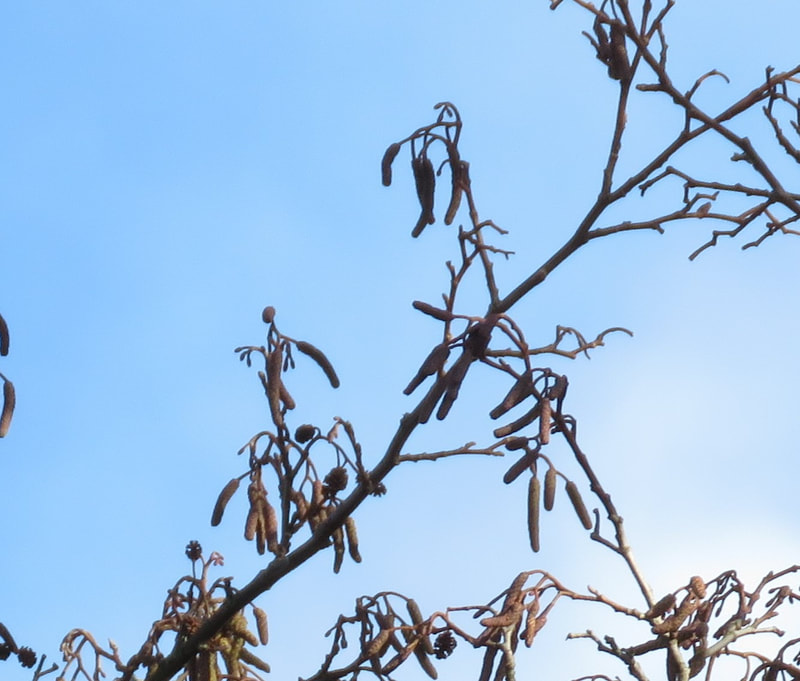
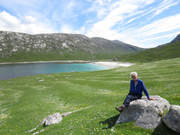
 RSS Feed
RSS Feed